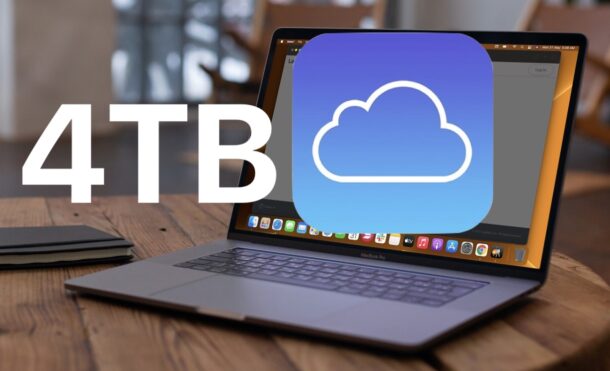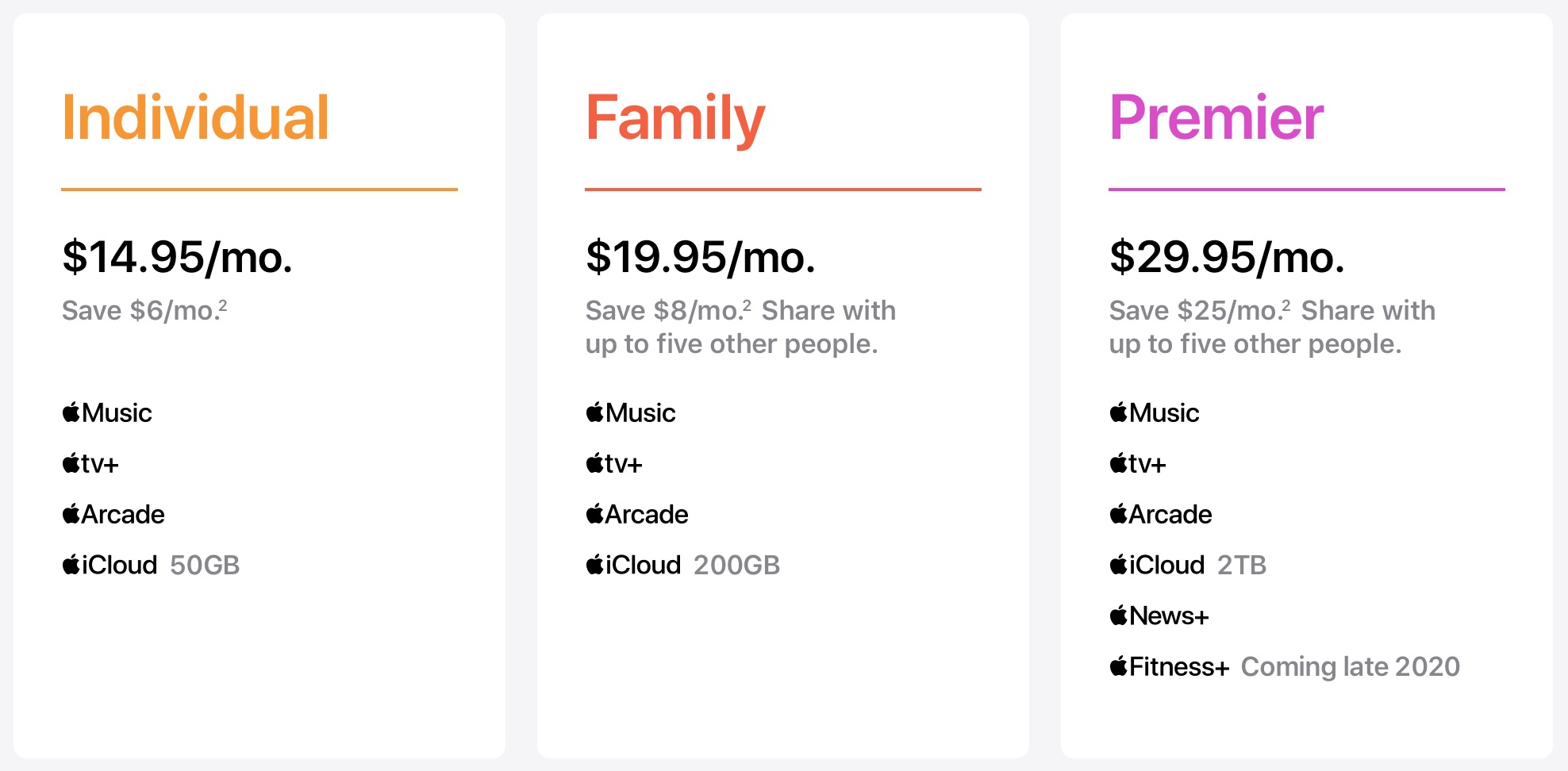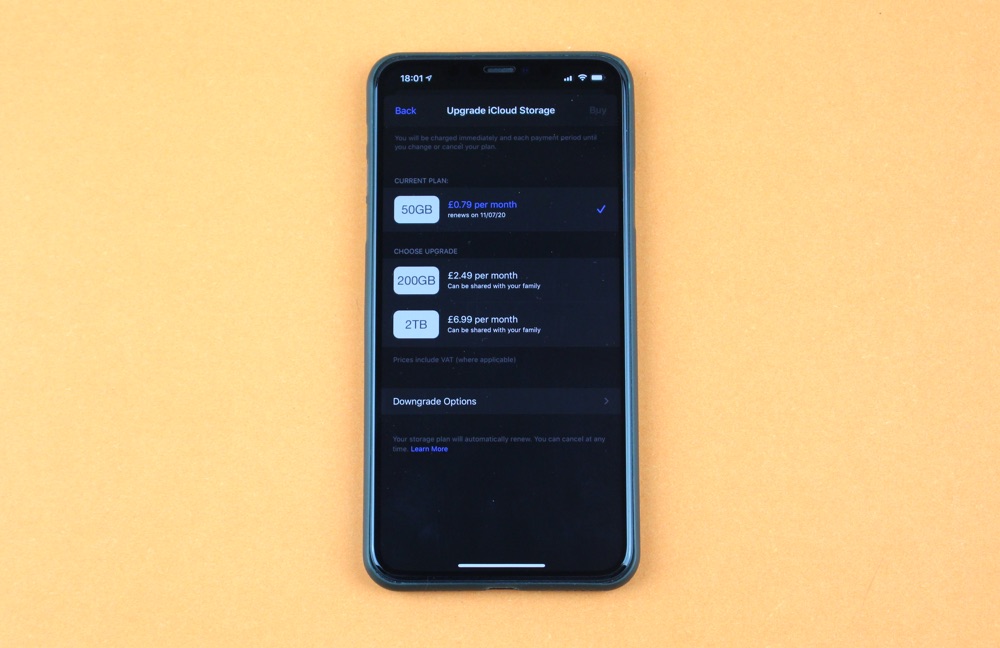
- #APPLE ICLOUD STORAGE PLANS AND OPTIONS HOW TO#
- #APPLE ICLOUD STORAGE PLANS AND OPTIONS SOFTWARE#
- #APPLE ICLOUD STORAGE PLANS AND OPTIONS MAC#
- #APPLE ICLOUD STORAGE PLANS AND OPTIONS WINDOWS#
If you’re using macOS Mojave or earlier, you don’t need to click Apple ID.Ĭlick Change Storage Plan or Buy More Storage, and choose a plan.Ĭlick Next and enter your Apple ID password. Tap Buy and follow the onscreen instructions.Ĭhoose Apple menu > System Preferences, then click Apple ID. Tap Buy More Storage or Change Storage Plan. Go to Settings > iCloud > Manage Storage or iCloud Storage.
#APPLE ICLOUD STORAGE PLANS AND OPTIONS HOW TO#
How to upgrade on your iPhone, iPad, or iPod touch Whether you’re on an iPhone, iPad, iPod touch, Mac, or PC, upgrading your iCloud storage is simple. If you need more iCloud storage, you can buy more for a total of up to 4TB. With Apple One, you can choose a subscription plan that includes 50GB, 200GB, or 2TB of iCloud storage. Each month you’ll get an email to remind you of your upcoming payment. You’re billed every month for your storage plan unless you downgrade or cancel your plan. If you upgrade from one paid plan to another, we’ll cancel your existing plan and charge you the prorated cost of your new, larger plan. Your storage is upgraded immediately, and your monthly payment date reflects the purchase date for your plan. You can even share the 200GB and 2TB plans with your family.

You can choose from a total of 50GB, 200GB, or 2TB. You can use that space for your iCloud backups, to keep your photos and videos stored in iCloud Photos, and your documents up to date in iCloud Drive. You can buy more storage any time. When you set up iCloud, you automatically get 5GB of storage.
#APPLE ICLOUD STORAGE PLANS AND OPTIONS MAC#
Learn more about iCloud Drive on Mac and how it works from Apple here.If you’re running low on space in your iCloud account, it’s easy to upgrade if you’re willing to spend the money. It's a hard drive in the sky that you can access from all your devices. You can create new folders, drag and drop stuff into your iCloud Drive from your Mac or elsewhere, and you have the option to save files and data from apps into your iCloud Drive.


Think of iCloud Drive like any other remote volume, external hard disk, network drive, or storage service. You can also store whatever you want, so long as it isn't bigger than 50GB and doesn't exceed your iCloud storage allowance. But you can create any folder and keep it in iCloud Drive. ICloud Drive by default has folders for each of your Apple iWork apps (Keynote, Pages, and Numbers), along with folders for apps like Preview, QuickTime Player, Script Editor, TextEdit, and Automator. You can also find iCloud Drive from the Go menu of any Finder window. To access iCloud Drive from a Mac, click on the Finder icon in your Mac dock, then click on iCloud Drive in the Favourites sidebar, and click on iCloud Drive.
#APPLE ICLOUD STORAGE PLANS AND OPTIONS WINDOWS#
Here is how iCloud Drive works on Mac, iPhone/iPad, Windows and the web.
#APPLE ICLOUD STORAGE PLANS AND OPTIONS SOFTWARE#
This feature is a Dropbox-like feature that allows you to share a folder once, and have everyone see the contents and changes in real time, but it's just one example of functions that get added to iCloud Drive with software updates. This Apple support page has more about how to get started with .Īpple constantly updates iCloud Drive with new features, like iCloud Drive folder sharing that launched in 2020. You can use Apple's website for iCloud to create, save, and share documents in Pages, Numbers, and Keynote, for instance. It even allows you to create new files and folders from iCloud-enabled apps and work on the same file across multiple apps. iCloud Drive also works with. Not only does it let you store all your stuff in one place, but it lets you access all of your files and data from your iOS device, Mac, and Windows PC, and then keep those files and folders up to date across all your devices.

ICloud Drive is part of iCloud, Apple's cloud storage service that launched in 2011. It lets you save photos, videos, documents, music, and app data to iCloud.


 0 kommentar(er)
0 kommentar(er)
